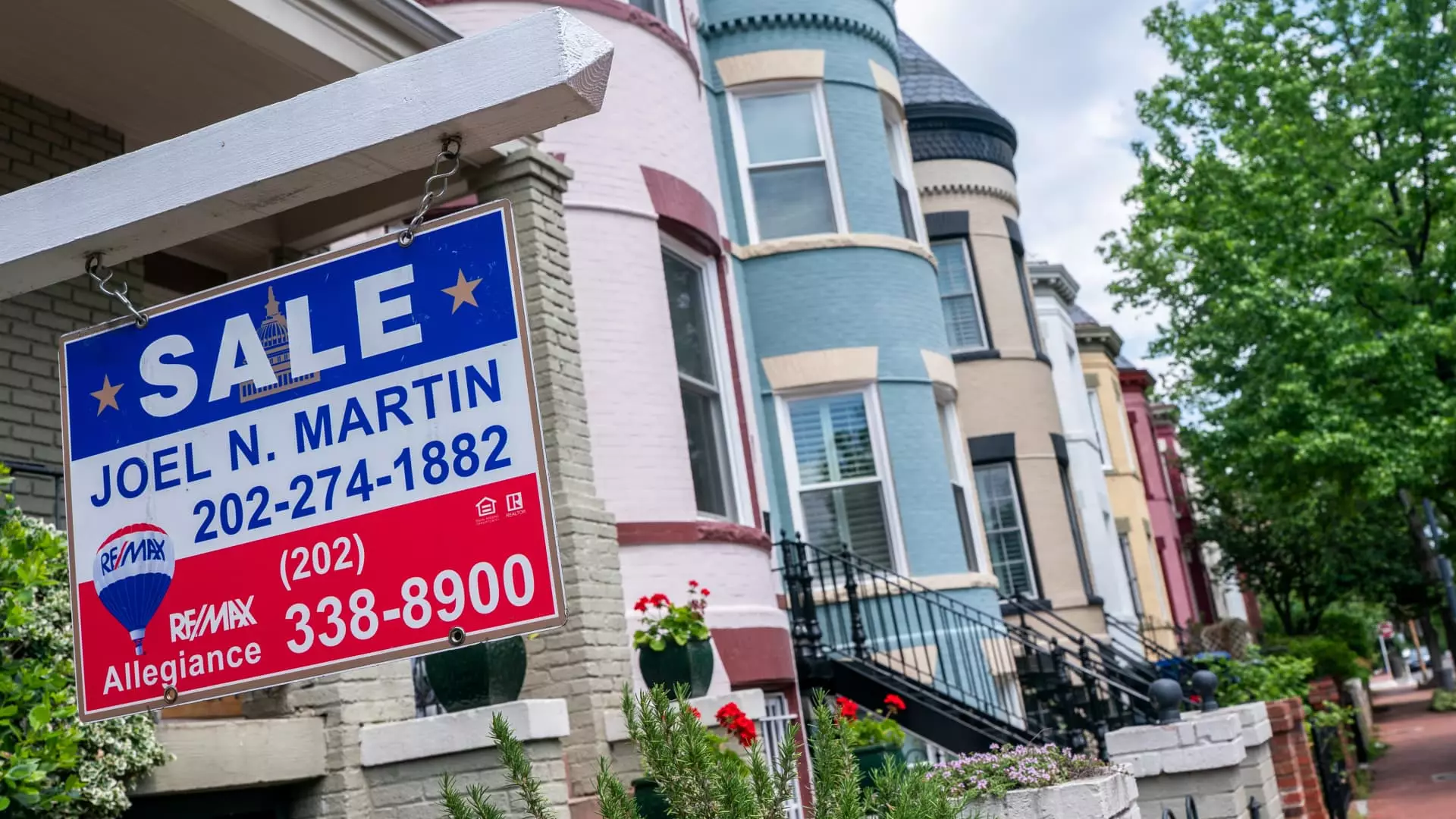The spring housing market, typically synonymous with revival and renewal, is buckling under the weight of soaring interest rates and a pervasive air of consumer skepticism. According to the National Association of Realtors (NAR), sales of previously owned homes reached a meager pace in April, declining by 0.5% from March. This downturn resulted in a disappointing annualized rate of just 4 million units—marking the slowest April pace the market has witnessed since 2009. Even more troubling, April sales fell 2% compared to the same month a year ago, sharply contrasting with economists’ anticipations of a 2.7% increase. These figures beg a sobering question: how long can we ignore the evident disconnect between market conditions and consumer behavior?
What’s particularly striking is that this reported slowdown encompasses contract signings that likely occurred in February and March, prior to the steep rise in mortgage rates that would inevitably affect buyers’ decisions. Despite a seemingly healthy job market with seven million new jobs, home sales have languished at a mere 75% of pre-pandemic levels for the past three years. Lawrence Yun, NAR’s chief economist, paints a grim picture as he articulates, “Pent-up housing demand continues to grow, though not realized.” This notion of unfulfilled demand raises important concerns about the structural foundations of our housing market.
Inventory Surplus: A Double-Edged Sword
While one might expect a rise in inventory levels to invigorate the market, the current landscape presents a double-edged sword. Recent reports indicate a significant 9% spike in inventory month-over-month, combined with a staggering 21% increase compared to April of the previous year. With 1.45 million homes for sale, this surplus reflects a 4.4-month supply— the highest in five years yet still shy of the six-month benchmark considered a balanced marketplace. Last year, the supply stood at a mere 3.5 months, underscoring the dramatic shift that has occurred.
As supply begins to outpace demand, we are witnessing a shift in negotiating power towards buyers. The median price for existing homes sold in April was pegged at $414,000, reflecting a cautious year-over-year increase of just 1.8%. While this figure represents a historical high for April pricing, the slow appreciation signals that we may be nearing a pricing ceiling. Notably, both the South and West regions have experienced price declines, which challenges the persistent narrative that housing prices will only ever go up. Yun’s assertion of a mild seller’s market amid unprecedented inventory levels feels increasingly tenuous when interpreted through the lens of consumer choices and preferences.
The Changing Role of First-time Buyers
Amidst these fluctuations, first-time homebuyers remain an essential demographic, accounting for 34% of sales—essentially on par with last year. However, rising cancellations paint a bleak picture for aspiring homeowners, as the cancellation rate surged to 7% in April, compared to a historical average of 3% to 4%. This dynamic discrepancy between initial enthusiasm and subsequent cancellations suggests a growing disillusionment and strain among potential buyers navigating this tumultuous market.
Interestingly, while the overall activity may be flagging, the luxury market is witnessing a contrasting trend. Sales of homes exceeding one million dollars increased nearly 6% year-over-year, distinguishing the affluent segment from the struggles faced by the lower-priced housing category, which suffered a decline of just over 4%. The divergence in these trends may be indicative of shifting priorities among consumers, where wealthier buyers remain more insulated from potential economic vulnerabilities—especially in light of recent fluctuations in the stock market, as pointed out by Yun.
Exploring the Roots of Consumer Hesitancy
As we dissect the currents running through today’s housing market, what emerges is a tapestry woven with uncertainty, hesitation, and a prevailing fear of making long-term financial commitments. The combination of rising mortgage rates and mental roadblocks stemming from economic unpredictability seems to have significantly blunted consumer confidence, resulting in a market characterized by inactivity rather than enthusiasm.
Ultimately, these trends suggest that the spring housing market may be a victim of its own complexities—where hope for recovery is thrown into disarray by a refusal to adapt and respond to rapidly changing economic conditions. In this environment, the conventional wisdom surrounding real estate investment must be scrutinized, and policies to alleviate barriers for buyers need to be assessed if we hope to reignite the flame of the housing market.

